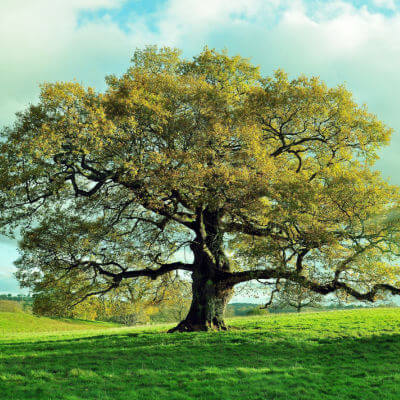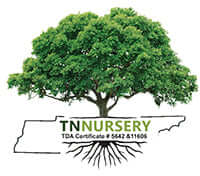
The Mighty Oak
Share
Five Strong Deciduous Diamonds
The Oak family of trees has been long known as the hardwoods of the forest or the mighty oak. There are hundreds of different types of Oak trees. Typically, when it comes to landscaping purposes, Oak trees are perfect for providing shade. They're also beautiful color changes during the Autumn months of the year. The average oak can live well past two hundred years old, given the proper living quarters, and this is a pretty easy goal to reach. Oaks can be planted in almost every planting zone the U.S. has to offer. If you'd like to know a little more information about the Oak tree, you've come to the right place. Here is a quick overview of a few different species of oak that you might see around your neck of the woods.
White Oak
The White Oak lives past 450 years old. They're large trees. These trees typically populate the ridges and valleys of the Appalachian Mountains. Like other Oaks, they have acorns, but White Oak acorns aren't others.

Willow Oak
The Willow Oak isn’t much like the standard Weeping Willow tree, but it does have one similarity. The leaves on a Willow Oak are long and slender like those of a Weeping Willow. It’s an excellent tree for ornamental uses because it grows pretty quickly. You’ll also find it pretty standard to see them growing near a small creek or stream, as they require the right amount of water.

Pin Oak
The Pin Oak is a large, luscious oak tree. Its bright green leaves cycle through an array of red, orange, and yellows through the Fall of each year. Like most oaks, the Pin Oak is excellent for ornamental uses and shading when landscaping. They don’t live as long as their relatives, but a good Pin Oak can live to be around 120 years old. You’ll want to avoid eating a Pin Oak acorn, too; they’re not very suitable to the palate.

Shumard Oak
This oak grows pretty quickly, just as the Willow Oak does. It’s typically a medium-sized tree that grows in more of a triangular shape. The Shumard gets its beautiful Fall colors a little later in the season than other trees, and their acorns don’t start showing up until the tree reaches around 25 years of age. This oak can be found near streams and lakes and sets a beautiful background built solely from nature.

Saw Tooth Oak
The Saw Tooth Oak is another in the Red Oak family that proliferates and produces plenty of acorns for the local wildlife. Their acorn's presentation of themselves is a bit different. They grow in what looks like a bit of straw hat, linking them to the tree branches. This oak, in particular, produces a lot more acorns each season than most oaks do.
